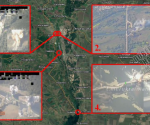A catalogue of setbacks for the anti-Russian axis; Part Two: catastrophic failure in the Zaporozhye, South Donetsk and Donetsk directions
Although there is some equivocation from some elements of the anti-Russian axis, it is widely accepted to be the case that the Armed Forces of Ukraine (AFU) began a general counteroffensive on 4th June, attacking in the theatres that the Russians call the Donetsk, South Donetsk and Zaporozhye directions.
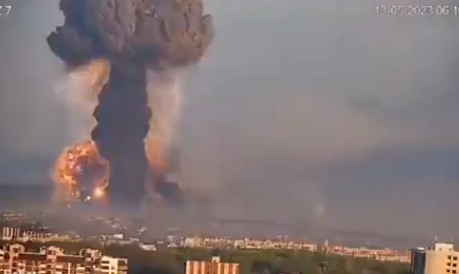
Perhaps the most notable case of the evisceration of the Ukrainian potential, as occurred at Khmelnytsky in May.
Now, it is true that the author, in the first part of this series, stated that such a thing – long promised as it was – had yet to be seen due to a failure to muster it, and this view branched from, and was consistent with the doubt, expressed in several places at this site during coverage of the Special Military Operation, that the Ukrainians would not be able to bring any such operation to any satisfactory state of execution, but before that they wouldn’t even be able to try because they wouldn’t be able to stage adequately – meaning that they couldn’t gather the necessary wherewithal to beat the Russians. In short, the belief hereabouts was that the Ukrainians were so certain to fail, both in terms of building potential and then making it kinetically effective , that it should prevent them from trying.
There’s a line of information from the Russian MoD briefing of June 14th that lately justifies the belief. It says that the 7,500 people thus far lost to the AFU, killed and wounded, during its counteroffensive since June 4th did not include those who had been terminated “as a result of the use of Russian high-precision long-range weapons and aircraft deep in Ukrainian territory.” This particular warfare on Ukrainian potential, of course, had been going on before June: we all remember the huge explosion at Khmelnytsky in mid-May, for instance, where – at hundreds of miles distance from the front – Ukrainian preparations were sent into the atmosphere.
So, let there be no doubt – and let us establish this fact as soon as possible – the numbers of Ukrainian (and other foreigner “mercenaries”) that have been lost, and that are still being lost as the counteroffensive continues, is testimony to the fact of a calamitous failure being suffered by the anti-Russian axis.
Sensible heads, evidently, do not prevail in those ranks. The eventuality of disaster – now realised – did not stop them from trying. The author supposes that the UK/US instigators thought that the proportions of their Human Wave were favourable in relation to Russian ability to stand off and whack, or even block on the ground where it was necessary. They thought that enough blue map could be overrun for enough headlines regarding Ukrainian success, and at that point they would assert that enough leverage had been gained to force the Russians – pressured by the international community – to “freeze the conflict” (which is the idea for saving NATO/UK/US face whose current time has come). But even at this they fail miserably: a story told in the diagrams in Figures 1-5.
However, it is the numbers that indicate anti-Russian axis failure that this article is going to concentrate on with a simple presentation of them. These will be Ukrainian losses in personnel (presumed killed when the Russian MoD uses the term “destroyed”, although they could be lost by being otherwise no longer combat-able) and armour between 4th and 17th June, without counting losses in artillery or aviation.
Also, the numbers will be presented according to a division of theatres. As mentioned, the Ukrainians have been attacking in the Donetsk, South Donetsk and Zaporozhye directions. The first of these incorporates Ukrainian attacking activity around Artyomovsk and Avdeevka. Included in this grouping is also the accounting for losses at Maryinka, which this site usually treats as being South Donetsk. The Russians are adamant in their briefings that the Ukrainian are consistently unable to advance into their defences in this direction.
Ukrainian activity in South Donetsk, as the Russians classify it, is uniquely (as far as the author can tell) concerned with the “Vremievsky salient” (see Figs. 2 & 3), while in Zaporozhye it is primarily aimed around the larger settlements of Orekhov and Gulyai Pole (with nothing of import to tell in terms of Ukrainian claims of recaptured territory, hence there being no map).
So, with an Infantry Fighting Vehicle (IFV) being different from an Armoured Combat/Fighting Vehicle (AC/FV) (according to the Russian terminology) by dint of being a “demi-tank” (if you like), and a Motor Vehicle/Vehicle (MV/V) being a car or a specialised military vehicle separate from a pick-up truck (PT), the numbers for Ukrainian casualties in the said directions (and combinations of them where the Russian MoD has counted them together) for the duration between 4th and 17th June (inclusive) are as follows:
Donetsk: 3450 personnel; 13 tanks; 13 IFVs; 28 AC/FVs; 58 MV/Vs; 2 PTs.
South Donetsk: 2620 personnel; 63 tanks; 40 IFVs; 216 AC/FVs; 38 MV/Vs.
Zaporozhye: 1600 personnel; 88 tanks; 45 IFVs; 57 AC/FVs; 2 MV/Vs.
Zaporozhye & South Donetsk: 1265 personnel; 59 tanks; 41 IFVs; 63 AC/FVs; 4 MV/Vs.
Donetsk & South Donetsk: 595 personnel; 3 tanks; 17 IFVs; 38 AC/FVs.
The grand totals for losses across all of the theatres are therefore:
9530 personnel; 226 tanks; 156 IFVs; 402 AC/FVs; 102 MV/Vs; 2PTs.
These numbers are true to the characterisation given by Vladimir Putin at the St Petersburg International Economic Forum on 16th June when he said that at that time (as the counting stood on the 15th, we can suppose) the Ukrainians had lost 186 tanks and 418 armoured vehicles.
To make sense of this information, we should note – for instance – the content of a statement by Sergei Shoigu (Russian Defence Minister and general) issued on 8th June:
Today at 1.30 a.m. in Zaporozhye direction, the enemy made an attempt to break through Russia’s defence by forces of the 47th Mechanised Brigade numbering up to 1,500 men and 150 armoured vehicles.
Perhaps, then, this indicates that at the moment, a reconstituted Ukrainian mechanised battalion consists of perhaps between 350 and 400 men, and 35 and 40 armoured vehicles. We can suppose, therefore, that the Ukrainians have lost 3 mechanised battalions in Zaporozhye, and this would represent three-quarters of the 47th Mechanised Brigade that opened its account on the 8th June (note: the claim is not being made that the said organisation has particularly suffered these losses – we’re just trying to paint a picture of the scale of the devastation).
In another example, on 5th June the Russian MoD stated the following:
On 4 June, the enemy made an unsuccessful attempt at a large-scale offensive in South Donetsk direction. Six mechanised and two tank battalions were deployed on the AFU side.
With the briefing of the next day stating that two of the mechanised brigades were now “remnants” of their former selves reorganised into “separate combined units” (associated at a company level under an ad hoc command?), it could well be the case (assuming that a tank battalion is similarly composed as is a mechanised one) that the numbers suggest that only a remnant of a tank battalion that started on 4th June as yet survives. Incidentally, 15 of these lost tanks would be of the German Leopard supposed-wunderwaffe variety.
Furthermore, perhaps it is also fair to guess that all of the mechanised battalions that started in the South Donetsk direction on the first day of the counteroffensive are now gone. Indeed, another notable thing stated by Putin on the 16th June was as follows:
Somewhere Ukrainian units manage to reach the first line, somewhere they fail. The issue is that they are using so-called strategic reserves.
What he appears to be saying is that even if the Ukrainians in different places are reaching the first line of Russian defence (whereas in other places they are failing completely), the point is that they are having to use their reserves to do it. “In none of the areas did they achieve their goals”, Putin went on to say. Altogether it means that the Ukrainians without exception have a lot to do in their counteroffensive, and have increasingly very little to do it with.
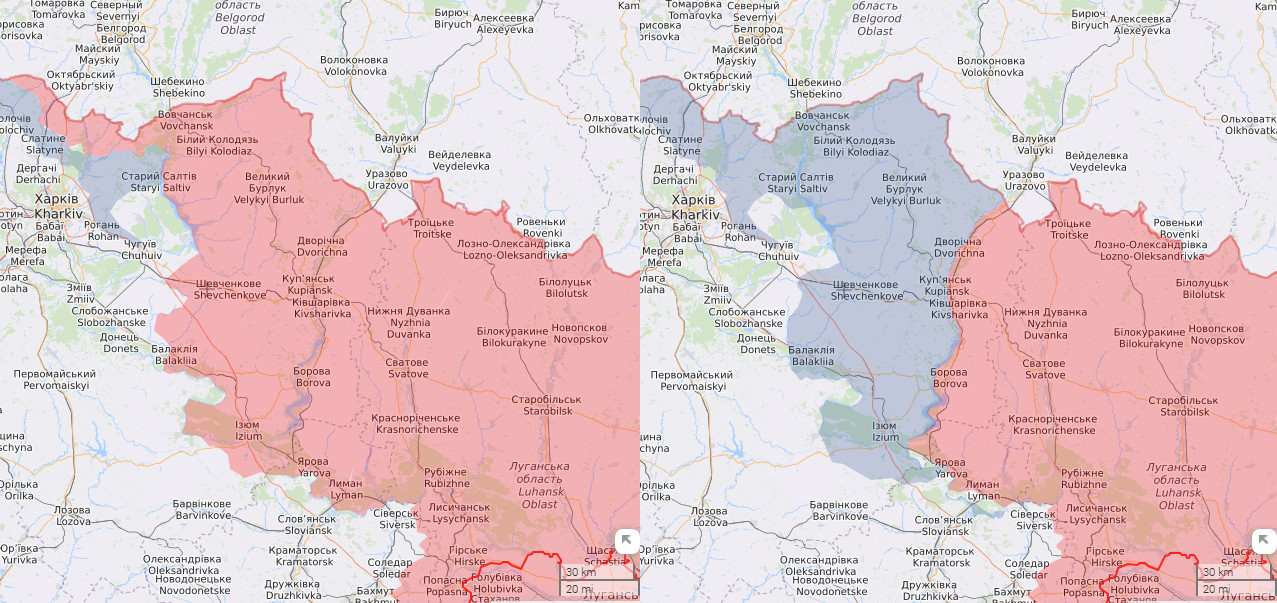
Fig. 1 – It should now be clear to everyone that the Russians had no plans to deny the Ukrainians their advance of 40 miles into Russian-held Kharkov. The graphic shows the situation, according to Liveuamap, on September 1st and then on September 14th, 2022 (click to enlarge).
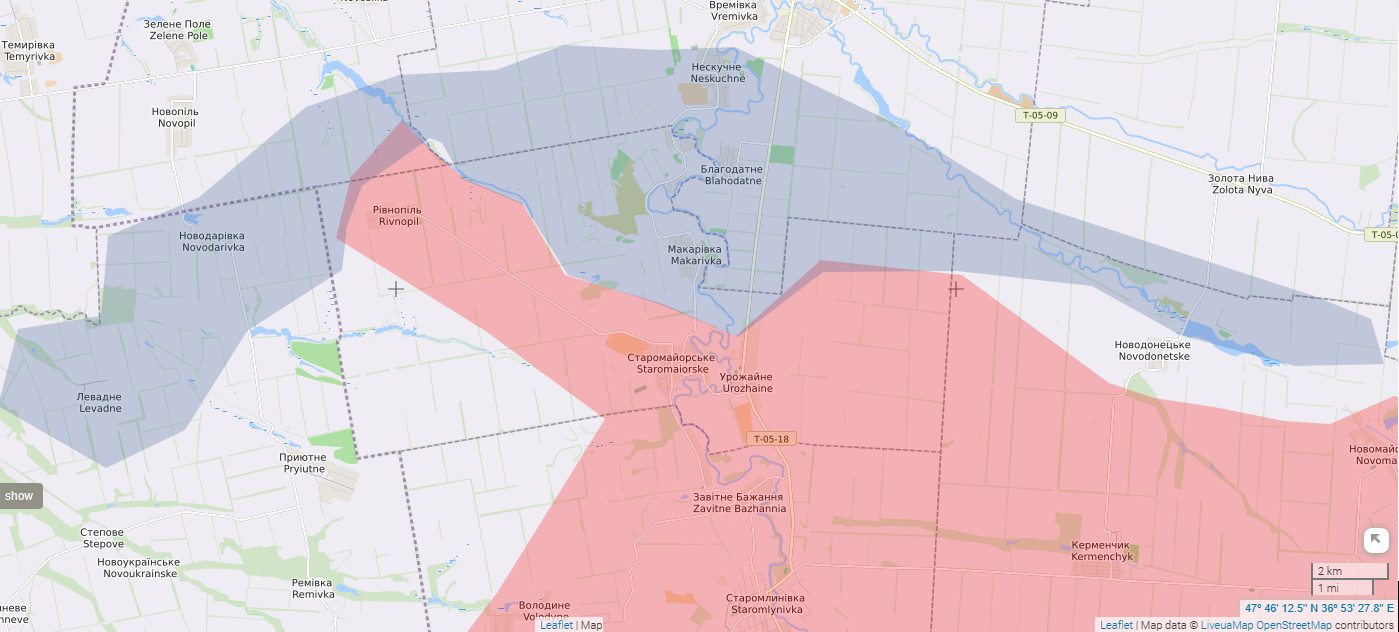
Fig. 2 – This image shows (for all intents and purposes) the extent of Ukrainian gain, again according to Liveuamap, in the South Donetsk/Zaporozhye directions. Bear in mind, this is what has been accomplished from the 4th to 16th of June, 2023. At its greatest extent, 4.5 miles, the Ukrainian advance is refuted by the Russians.
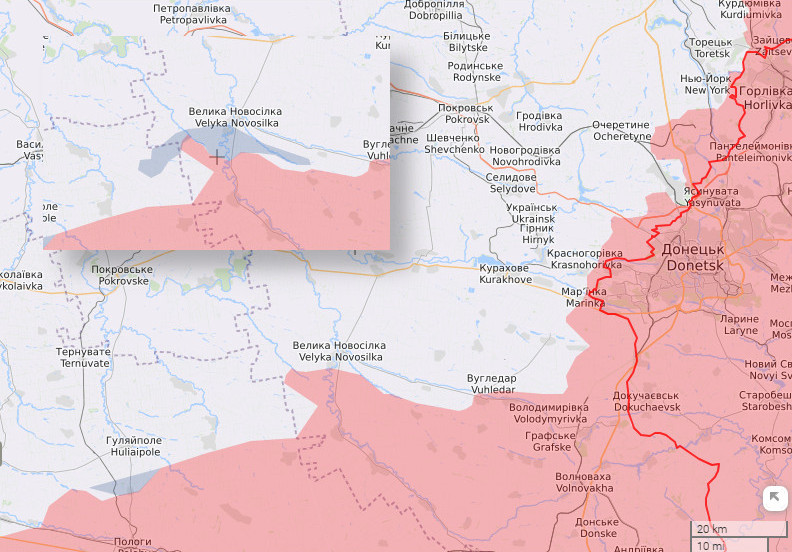
Fig. 3 – Showing the “Vremievsky salient” of Fig.2 as it was on 5th June, and in context (with current alleged situation inset). A splash of territory, 15 to 20 miles wide, on the border of Donetsk with Zaporozhye. If one looks very carefully one notices that the blue map claimed by Liveuamap (denoting land recaptured by the Ukrainians) at its western and eastern flanks was not previously controlled by Russia.
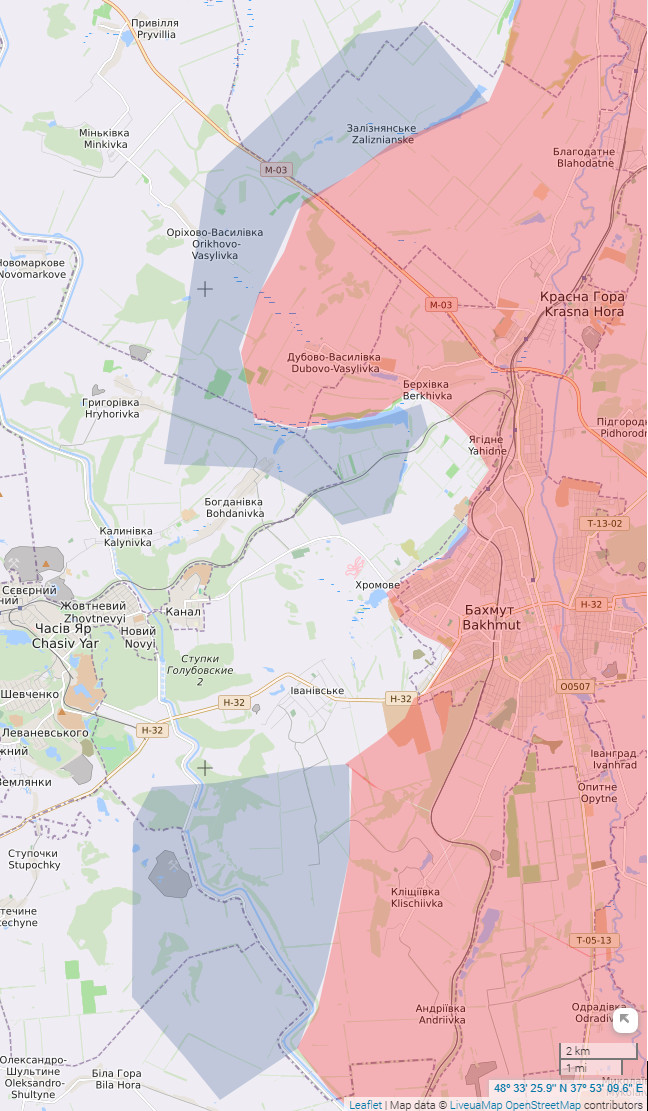
Fig. 4. What the Ukrainians are alleging the situation to be at Artyomovsk. Noticeably, this shading was first applied on 9th June. Obviously, in an attempt to divert from the abject failure in the south, it is a continuation of a fantasy regarding the recapturing of “Bakhmut’s flanks” which was a propaganda coping mechanism used at the time of the fall of Artyomovsk.
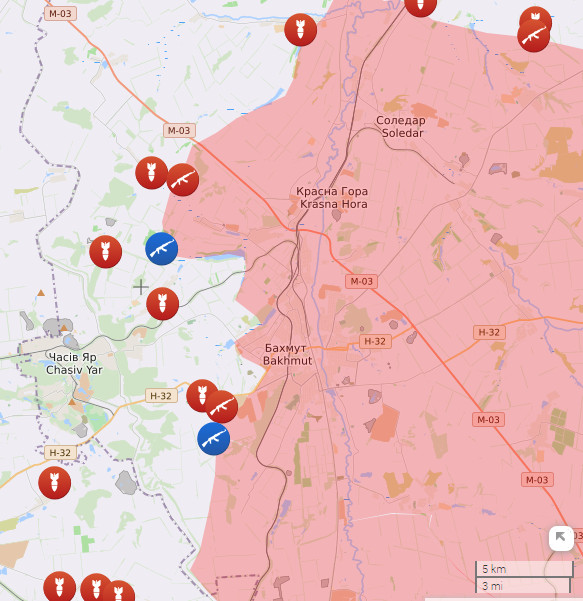
Fig. 5 – This was captured from Liveuamap on 8th June. What it shows – according to the Ukrainian perspective – is that Russia did not control the areas (fields, mostly) that were later shaded blue (for the sake of Ukrainian morale). Of course, the Russians will most likely have a completely different idea of what they control between Artyomovsk and the canals to the west.






